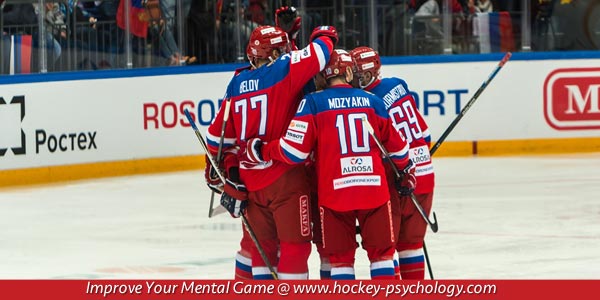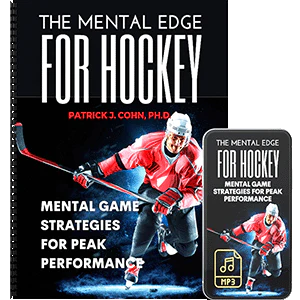
What Mental Game Skills Did Minnesota Use?
The mental game of hockey is critical when you’re down big in a game and need a miracle.
The Minnesota Wild were down by 4 goals with one period left playing at home. But they mounted a massive comeback in the third period and won a shootout against the Chicago Blackhawks.
Was this a focused comeback built on a shift in momentum or a case of sitting on the lead by the Blackhawks?
Many teams hold themselves back with a comfort zone.
A comfort zone is a mental barrier that limits what a team is capable of accomplishing. A comfort zone is most often a problem whenever a hockey team has a big lead.
They become complacent or begin to protect their lead. I try to help athletes break free of comfort zones so they can peak perform more often.
The Wild did not participate in the first two periods of the game, but turned it on in the third. “The first 40 minutes we watched them skate and watched them play.
But the last 20 minutes was great. The crowd and the atmosphere was unbelievable,” said Wild coach Todd Richards.
When a team begins to hold back and “protect” a comfortable lead, that’s when momentum can shift rapidly. ..
“When we scored a goal, it changed the momentum. Our legs came back, everything came back and things went well at the end,” said Guillaume Latendresse.
And When Momentum Shifts to the Home Crowd, Watch Out
The fans get involved and the beaten up team comes alive. It’s like stopping the momentum of a runaway train.
“We had to find a way to kill off the momentum and we didn’t do that. So they just kept going off it right into the shootout, and that’s what happens. It’s unfortunate, but we’ll learn from it,” said center Jonathan Toews of the Blackhawks.
When you are down by four goals, you can gamble without the pressure of making mistakes. So there’s no pressure.
You can just have fun trying to make goals.
Fun and momentum sounds like a good formula for a big time comeback.
“Sometimes it’s a lot easier coming off the bench. When you’re down by that much, there’s not really a lot of pressure. You just go out there and have fun,” said Josh Hardin.
Your hockey psychology tip for today… When you have a comfortable lead in the game, keep an offensive mindset and go for more goals.
Don’t protect your lead as no lead is safe. If you’re behind a few goals, look for signs you have momentum and have fun trying to turn around the game.
You never know when your opponents will protect the lead, tighten up, and lose the momentum.
Related Articles on Hockey Mental Game:
- Mounting A Comeback And Mental Toughness
- Canada’s Comeback: Mental Toughness of a Champion
- Using Your Mind to Close Out Hockey Games
*Subscribe to The Sports Psychology Podcast on iTunes
*Subscribe to The Sports Psychology Podcast on Spotify
The Mental Edge for Hockey

The Mental Edge for Hockey teaches you proven and simple mental game strategies so you can overcome fear of failure, lack of confidence, slumps or poor composure, take your practice game to competition, and boost your confidence in hockey. You learn simple, actionable mental game strategies to help you perform at your peak!
I’ve worked with athletes for 30 plus years – and know the top challenges that undermine performance when you perform in games. Now you can tap into my expertise and experience in coaching hockey players on the mental game.
In this program, you’ll learn the TOP 10 mental training lessons for hockey players – the same strategies I teach one-on-one athletes I coach on the mental game. My clients pay thousands of dollars for personal coaching, but now you can have the same strategies to improve your mental game – at a fraction of the price.
That is a great tip, I think that this works better in minor hockey, but not so much in the pros. Some teams like the NJ Devils have such a great defensive game that if they get a 2 goal lead, and then switch to a defensive shut down it is hard for the other team to get a goal. I do agree though that you should always be looking for offensive chances.